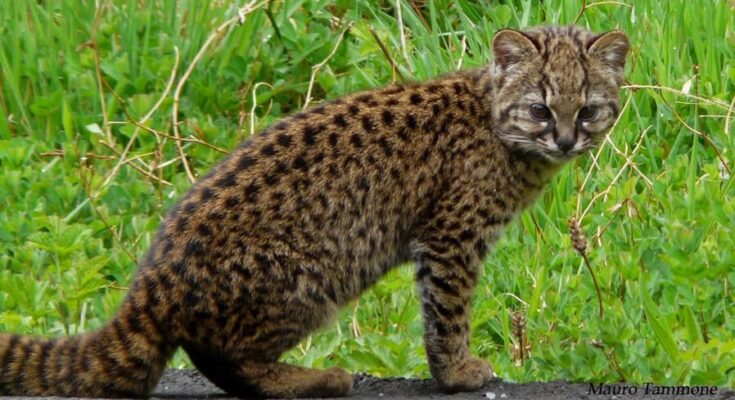
The kodkod, also known as Guiña locally, is the world’s smallest wildcat.
These tiny cats live mainly in the lush, moist forests of central and southern Chile and parts of Argentina. They thrive in areas with lots of plants under the trees, which are important for their survival.
Threats to survival
Kodkods are threatened by the loss of forests due to logging and farming. Their homes are also turned into plantations that don’t support their need for dense plant cover.
Humans pose a direct threat, as kodkods are sometimes killed because they hunt livestock and poultry. Dogs and cars also endanger these small wildcats.
Physical appearance and behaviors of the world’s smallest wildcat
Kodkods (Leopardus guigna) are very small, with thick tails and small faces. They somewhat resemble Geoffroy’s Cat of Argentina. Kodkods’ fur can be grey, reddish or brown and is spotted with small black marks. They also have distinct lines on their face and a few bands on their neck and head.
Their ears are small and rounded with a white spot in the center. Kodkods have short legs and big, black-padded feet. These little cats are active both during the day and at night. They are excellent climbers, using trees for safety and rest. This skill helps them avoid dangers and navigate their changing habitats.
Kodkods’ habitat
Kodkods prefer deep forests but are good at adapting to various environments. They can live in secondary forests and plantations if these places have thick undergrowth. However, they stay away from open grasslands where they can’t hide well.
Researchers have found that kodkods travel different distances depending on where they are. In some national parks, they might move up to 1.8 kilometers a day, but in fragmented areas, they could travel up to 13.9 kilometers.
Conservation efforts for the world’s smallest wildcat
Protecting Kodkods is tough because some people view them as pests. To help them survive, it’s important to teach communities about the benefits of kodkods, such as their role in controlling rodent populations.
Making small changes, such as improving chicken coops to protect poultry, can help reduce conflicts. Preserving natural corridors of vegetation to connect different forest areas is also essential. This helps kodkods move safely across larger areas, which is increasingly important as human activities expand, and the climate changes.
More research on kodkods’ needs and continuous monitoring of their populations are vital for creating effective conservation plans. Understanding these small cats better may allow for the development of strategies to ensure they continue to live in their native forests.
Protecting the kodkod is about balancing human needs with wildlife conservation. By considering both ecological and social factors, we can create a future in which the world’s smallest wildcat thrives alongside us.



